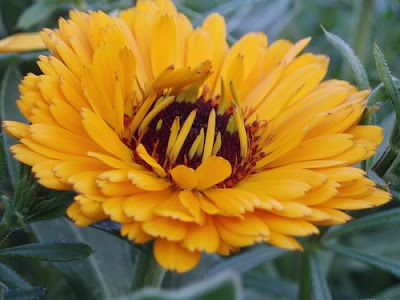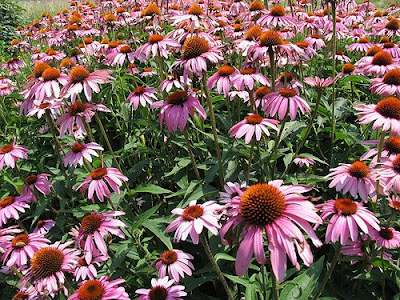A breast implant is a prosthesis used to alter the size and shape of a woman's breasts (known as breast augmentation, breast enlargement, mammoplasty enlargement, augmentation mammoplasty or the common slang term boob job) for cosmetic reasons, to reconstruct the breast (e.g. after a mastectomy or to correct congenital chest wall deformities), or as an aspect of male-to-female sex reassignment surgery. Pectoral implants are a related device used in cosmetic and reconstructive procedures of the male chest wall. A breast tissue expander is a temporary breast implant used during staged breast reconstruction procedures.
There are two primary types of breast implants: saline-filled and silicone-gel-filled implants. Saline implants have a silicone elastomer shell filled with sterile saline liquid. Silicone gel implants have a silicone shell filled with a viscous silicone gel. Several alternative types of breast implants had been developed, such as polypropylene string or soy oil, but these are no longer manufactured.
Procedure
The surgical procedure for breast augmentation takes approximately one to two hours. Variations in the procedure include the incision type, implant material, and implant pocket placement.
Incision types
Breast implants for augmentation may be placed via various types of incisions:
* Inframammary - an incision is placed below the breast in the infra-mammary fold (IMF). This incision is the most common approach and affords maximum access for precise dissection and placement of an implant. It is often the preferred technique for silicone gel implants due to the longer incisions required. This method can leave slightly more visible scars in smaller breasts which don't drape over the IMF. In addition, the scar may heal thicker.
* Periareolar - an incision is placed along the areolar border. This incision provides an optimal approach when adjustments to the IMF position or mastopexy (breast lift) procedures are planned. The incision is generally placed around the inferior half, or the medial half of the areola's circumference. Silicone gel implants can be difficult to place via this incision due to the length of incision required (~ 5 cm) for access. As the scars from this method occur on the edge of the areola, they are often less visible than scars from inframammary incisions in women with lighter areolar pigment. There is a higher incidence of capsular contracture with this technique.
* Transaxillary - an incision is placed in the armpit and the dissection tunnels medially. This approach allows implants to be placed with no visible scars on the breast and is more likely to consistently achieve symmetry of the inferior implant position. Revisions of transaxillary-placed implants may require inframammary or periareolar incisions (but not always). Transaxillary procedures can be performed with or without an endoscope.
* Transumbilical (TUBA) - a less common technique where an incision is placed in the navel and dissection tunnels superiorly. This approach enables implants to be placed with no visible scars on the breast, but makes appropriate dissection and implant placement more difficult. In that regard, it is pertinent that a published medical journal report analyzed a consecutive series of more than 1300 TUBA cases done by a single surgeon over a 15 year span, with no instance of incorrect implant placement. Transumbilical procedures are performed bluntly, with or without an endoscope (tiny lighted video camera) to assist dissection. This technique is not appropriate for placing silicone gel implants due to potential damage of the implant shell if attempting insertion through the small 2 cm incision in the navel, and as those implants are pre-filled they cannot be passed through that incision.
* Transabdominoplasty (TABA) - procedure similar to TUBA, where the implants are tunneled up from the abdomen into bluntly dissected pockets while a patient is simultaneously undergoing an abdominoplasty procedure.
* Areolar Vertical Approach (AVA) - the technique created by Dr. Lejour and developed by Dr. Van Thienen, is a very similar approach to the periareolar as the insicion is the same, but leaves a more extended submuscular pocket for the Silicon Gel Implants, through the transglandular sectione to the top pectoral fascia. The cavity is drained after being washed with Saline solution before the implants are placed. This technique developed in Argentina was proved to have excelent results even after numerous long term surgeries.
Types of implants
Saline implants

Saline-filled breast implants were first manufactured in France in 1964, introduced by Arion with the goal of being surgically placed via smaller incisions. Current saline devices are manufactured with thicker, room temperature vulcanized (RTV) shells than earlier generations of devices. These shells are made of a silicone elastomer and the implants are filled with salt water (saline) after the implant is placed in the body. Since the implants are empty when they are surgically inserted, the scar is smaller than is necessary for silicone gel breast implants (which are filled with silicone before the surgery is performed). A single manufacturer (Poly Implant Prosthesis, France) produced a model of pre-filled saline implants which has been reported to have higher failure rates in vivo.
Saline-filled implants were most common implant used in the United States during the 1990s due to restrictions that existed on silicone implants, but were rarely used in other countries. Good to excellent results may be obtained, but as compared to silicone gel implants, saline implants are more likely to cause cosmetic problems such as rippling, wrinkling, and to be noticeable to the eye or the touch. Particularly for women with very little breast tissue, or for post-mastectomy breast reconstruction, silicone gel implants are considered as superior. In patients with more breast tissue in whom submuscular implant placement is used, saline implants can look very similar to silicone gel.
Silicone gel implants
Thomas Cronin and Frank Gerow, two Houston, Texas, plastic surgeons, developed the first silicone breast prosthesis with the Dow Corning Corporation in 1961. The first woman was implanted in 1962. Silicone implants are generally described in terms of five generations which segregate common characteristics of manufacturing techniques.
Implant pocket placement

The placement of implants is described in relation to the pectoralis major muscle.
* Subglandular- implant between the breast tissue and the pectoralis muscle. This position closely resembles the plane of normal breast tissue and is felt by many to achieve the most aesthetic results. The subglandular position in patients with thin soft-tissue coverage is more likely to show ripples or wrinkles of the underlying implant. Capsular contracture rates may also be slightly higher with this approach.
* Subfascial - the implant is placed in the subglandular position, but underneath the fascia of the pectoralis muscle. The benefits of this technique are debated, but proponents believe the fascial layer of tissue may help with coverage and sustaining positioning of the implant.
* Subpectoral ("dual plane") - the implant is placed underneath the pectoralis major muscle after releasing the inferior muscular attachments. As a result, the implant is partially beneath the pectoralis in the upper pole, while the lower half of the implant is in the subglandular plane. This is the most common technique in North America and achieves maximal upper implant coverage while allowing expansion of the lower pole. Animation or movement of the implants in the sub pectoral plane can be excessive to some patients.
* Submuscular - the implant is placed below the pectoralis without release of the inferior origin of the muscle. Total muscular coverage may be achieved by releasing the lateral chest wall muscles (serratus and/or pectoralis minor) and sewn to the pectoralis major. This technique is most commonly used for maximal coverage of implants used in breast reconstruction.
Source :
- Wikipedia

























